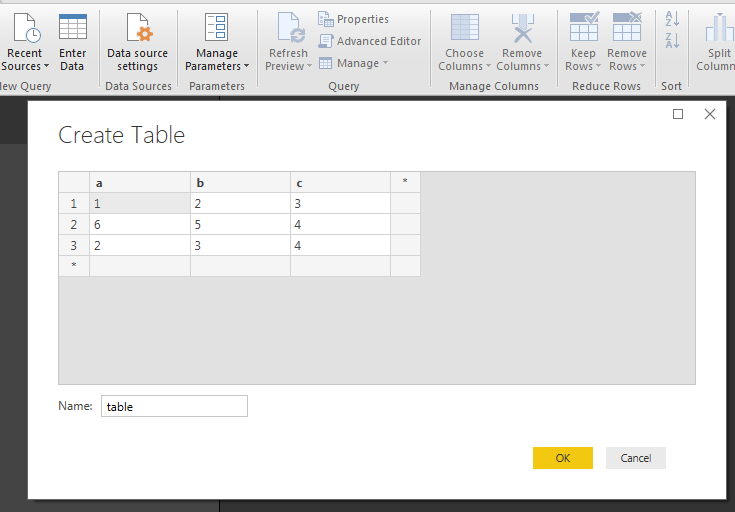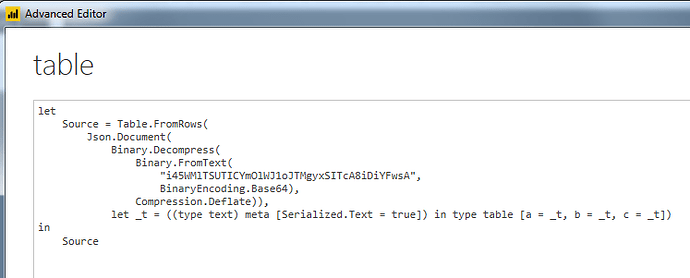Hey there!
This is perhaps a niche pain. Sometimes, I find myself needing to quickly cook up a small dimensional table or a test table: a handful of rows, a handful of columns. Nothing serious.
Of course, it is not too hard to do, and there are many ways to get there, including my favorite tibble().
However, I find it easier to do using spreadsheets. Especially, if you go beyond a 2 x 3 table...
Now, it is madness to create a small table in Excel and let R read the file. Obviously. Table generation should stay in the script.
I was wondering is next versions of RStudio could have a simple mechanism of generating a table. Or rather generating a short tibble script with user's input.
Here is an example of how it could work. It comes from Microsoft Power Query / Power BI, where I spend a lot of time at work... ![]()
First, you get an interface to enter your data:
...which generates, you've guessed it, a table:

...while what happens behind the scenes is impossible to understand, but I guess it basically generates a long encrypted string, and then decodes it as a JSON string, and makes it a table
(in my imagination, in RStudio that's where a tibble code would go)
It is faster and more intuitive, and leaves an actual script behind, and no external files. A win-win?
So, any thoughts? Too much? Unnecessary for most? Not too bad?



